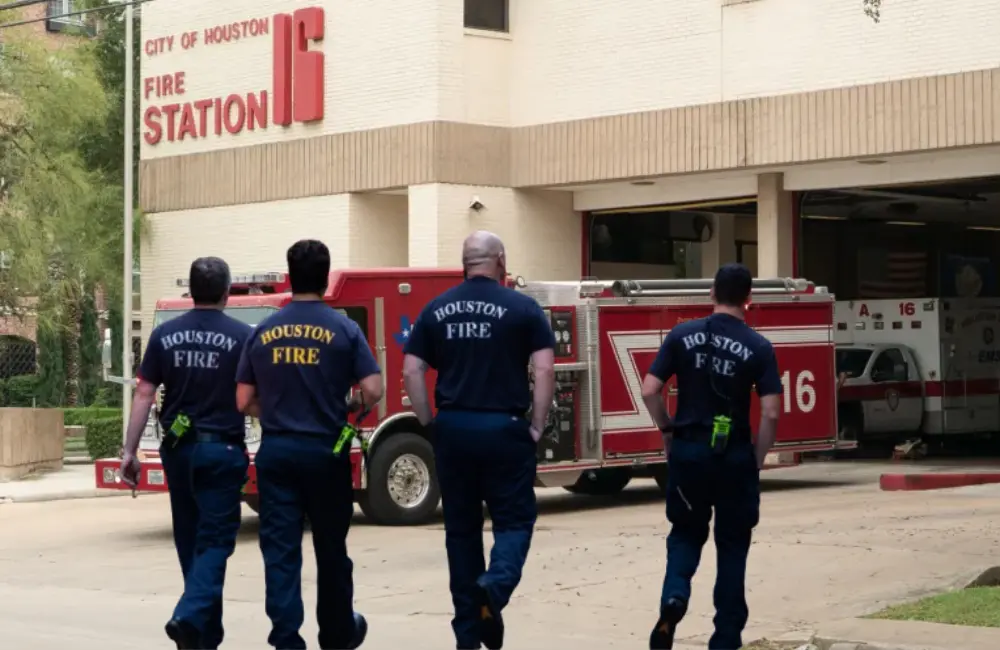We are discussing hfd staffing today. Learn how efficient staffing techniques enhance safety, operational flow, and department response times.
Introduction
HFD personnel is essential to preserving peak performance, guaranteeing patient care, and adhering to legal requirements in the healthcare sector. It’s critical to comprehend the subtleties of hfd staffing whether you’re in charge of an emergency services provider, clinic, or hospital. Everything you need to know about Healthcare Fire Department (HFD) personnel is covered in detail and strategically in this guide, from certifications and compliance to effective scheduling models and hiring procedures.
HFD Staffing: What is it?
In order to guarantee proper emergency response, fire prevention, and support services at medical facilities, hfd staffing refers to the organized distribution of people, especially in healthcare fire departments. This includes paramedics, firefighters, emergency medical technicians (EMTs), fire safety officials, and other professionals with particular training in managing fire-related situations in hospital settings.
The Significance of HFD Staffing in Medical Environments
Safety and prompt action are critical in the healthcare industry. The presence of oxygen tanks, electrical equipment, combustible materials, and 24-hour activities make hospitals and clinics susceptible to fire threats. A certain HFD staffing model guarantees:
- Quick emergency action
- Risk assessment and fire prevention
- Compliance with the Life Safety Code
- Protection of patients and employees
- Maintaining operations in times of crisis
Essential Elements of a Successful HFD Staffing Plan
1. Certifications and Regulatory Compliance
Federal, state, and municipal fire safety regulations must be followed by an HFD personnel structure that complies. The following essential certificates are needed:
- National Fire Protection Association (NFPA) Certifications
- EMT/Paramedic Certification
- Certification for Firefighters I and II
- Awareness and Operations of Hazards
- BLS and CPR Instruction
In life-threatening circumstances, compliance guarantees both operational integrity and legal protection.
2. Functions and Accountabilities in HFD Staffing
The following individuals are crucial to hfd staffing:
- Fire Chiefs: Plan for crisis management, budgeting, and personnel.
- Fire captains and lieutenants are in charge of managing daily operations and supervising teams.
- EMTs and firefighters are first responders who are prepared for both medical and fire situations.
- Hospital fire safety systems are monitored and audited by safety officers.
- During emergencies, dispatchers coordinate quick deployment and communication.
To create a cohesive, quick-response team that is suited for the healthcare setting, each position is essential.
Best Practices for Hiring for HFD Staffing
1. Specific Hiring Techniques
To draw in the best personnel for emergency and fire services:
- Collaborate with fire academies and technical colleges.
- Provide benefit and pay packages that are competitive.
- Emphasize wellness and work-life balance efforts.
- Stress professional development and specialized medical education.
2. Verification of Credentials and Background
Extensive screening is a must. Recruiting needs to involve:
- Criminal, employment, and certification background checks
- Tests of physical fitness
- Simulation-based evaluations
- Panel interviews and peer review
This guarantees that only highly competent people are brought on board.
Improving HFD Coverage and Scheduling
The key to effective hfd staffing is scheduling. Workload, downtime, and emergency readiness must all be balanced during rotations. Some examples of effective models are:
1. Model for 24-Hour Shift
This model is perfect for full-time firemen and comes with:
- 48–72 hours off and 24 hours on duty
- permits ongoing coverage without experiencing exhaustion.
2. Overlap schedules and split shifts
For medical facilities that need ongoing fire safety surveillance:
- Use split shifts to cut down on weariness.
- To guarantee clear transfer, use overlap hours.
3. Rotations While on Call
Particularly helpful for specialist positions or smaller facilities:
- During off-hours, employees are allocated to on-call duty.
- ensures rapid mobilization without hiring too many people.
Using Technology in HFD Staffing
1. Software for Workforce Management
Utilize software programs to:
- Keep track of license expirations and certifications.
- Automate the management of availability and scheduling.
- Track staff performance indicators and reaction times.
Vector Solutions, ESO Scheduling, and Kronos are some of the best platforms.
2. Tools for Real-Time Communication
Use mobile alert apps and computer-aided dispatch (CAD) systems to:
- During incidents, increase coordination
- Reduce the amount of time that responses take.
- Give information on the availability and locations of personnel.
Instruction and Ongoing Learning for HFD Staff
Continuous training is essential to keeping HFD teams competent and compliant. Important training topics consist of:
- Healthcare-specific fire suppression methods
- Protocols for Advanced Life Support (ALS)
- Patient interaction and de-escalation
- Simulation exercises and evacuation drills
- Using PPE and controlling infections
For certified continuing education, facilities should collaborate with recognized organizations.
Performance Assessment and KPI Monitoring
Continuous improvement is ensured by assessing the efficacy of your HFD workforce. Track KPIs such as:
- Average time to respond
- Quarterly incidents handled
- Pass rate for compliance audits
- Rate of employee retention
- Reports of patient safety incidents involving fire emergencies
Strategic modifications to training initiatives and staffing models are made possible by the use of these data.
Managing Costs in HFD Staffing
Budgetary restrictions exist even if personnel is crucial. Among the cost-control strategies are:
- Employee cross-training for multiple positions (e.g., Fire Safety Officer + EMT)
- Using volunteers and part-timers when demand is low
- Making use of federal grants for equipment and training
- To cut internal expenses, safety audits and fire drills are being outsourced.
Financial sustainability is ensured by an ideal cost-coverage ratio.
Future Directions in Healthcare HFD Staffing
The advancement of HFD workforce is in tandem with the development of healthcare infrastructure. Among the new trends are:
- AI-driven instruments for risk assessment
- Systems for remote fire monitoring
- Using drones to monitor buildings
- Training materials for augmented reality
- Integration of Telemedicine for EMTs
To stay ahead, forward-thinking staffing practices need to be in line with these advancements.
FAQs
- In staffing, what is HFD stand for?
Hourly, full-time, and direct-hire staffing services are sometimes referred to as HFD.
- Can I obtain a permanent job through an HFD staffing agency?
Of course! Numerous agencies provide temp-to-perm or direct-hire positions.
- What is the cost of HFD employment for companies?
Although prices vary, they frequently involve a one-time placement charge for direct workers or a markup on hourly earnings.
- Do HFD staffing firms offer assistance with interview and resume preparation?
Indeed, the majority of respectable organizations provide interview advice, resume assistance, and career coaching.
- How long does the HFD personnel hiring process take?
Depending on your skill set and the availability of the position, it could take as little as 24 to 72 hours.
Conclusion
More than just a legal necessity, a strong hfd staffing system is essential to the resilience, safety, and efficiency of healthcare. Healthcare facilities may guarantee complete fire and emergency coverage by making investments in skilled staff, intelligent scheduling, ongoing training, and performance monitoring. In addition to saving lives, putting strategic staffing procedures into place improves operational excellence and trust in high-risk situations.















Leave a comment